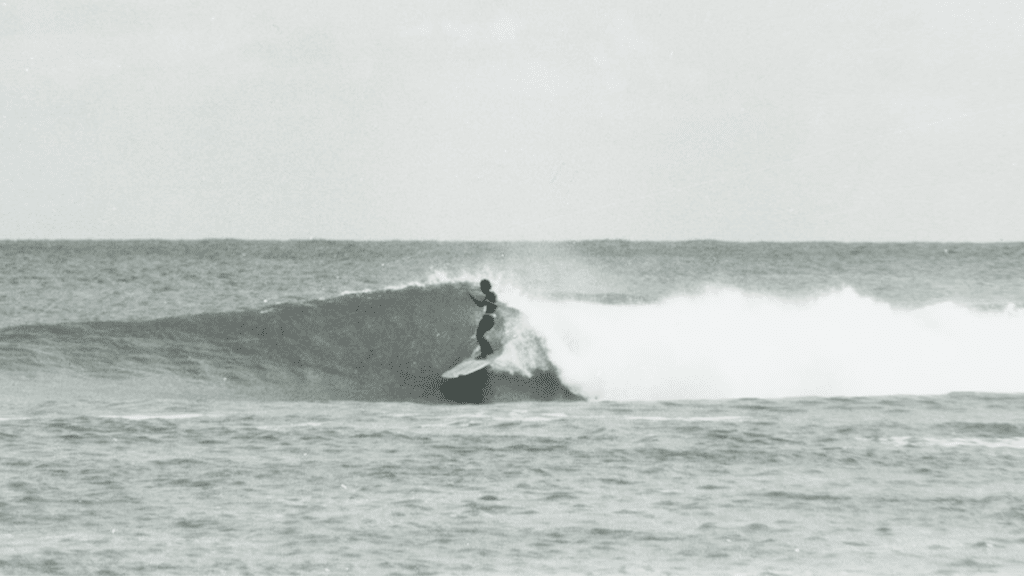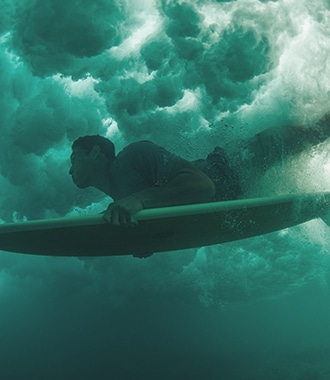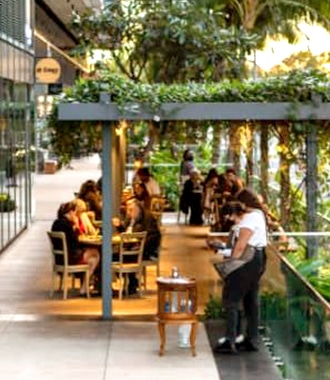The Forgotten Wave of Ala Moana

It’s often a memorable detail that sticks out in the mind of the first surfers to discover a surf spot that gives the break its name.
Little mementos about the wave itself, something noteworthy on the beach, or, boringly, the name of a street or park that might abut the surf break. “Hey let’s go back to that wave we found yesterday—you know, the one with the hollowed out tree on the beach,” a globetrotting surfer might say to his buddy. Thus the name “Hollow Trees” is born (surf spot names are usually pluralized, nobody seems to know why). Near Honolulu’s Ala Moana Beach Park, a cherished but now extinct reef wave once broke just west of the Ala Wai canal. Trash carried to sea by the canal would collect and listlessly twirl in the currents near the fabulous little wave. The garbage in the lineup made a big impression apparently. Local surfers called the place Garbage Hole. If the name fits, as they say.
Garbage Hole was just one break among a string of surfing jewels stretching from the Kahanamoku Lagoon eastward toward Diamond Head. The break was made semi-famous by a short clip at the beginning of Bruce Brown’s 1966 classic The Endless Summer, when Wayne Miyata was shown riding a few small, perfectly tapered tubes at Garbage Hole. Surf historian Matt Warshaw once remarked that those were likely the first tuberides ever recorded on film. Sadly, those were also some of the only tubes at Garbage Hole ever recorded on film as the wave was gone by the time The Endless Summer premiered.
In 1964, the City of Honolulu began constructing Magic Island, a peninsula of land jutting out just west of the Ala Wai Harbor. The idea was to dump a bunch of landfill into the ocean, then build a resort or two or three on the newly formed “island.” The construction that formed Magic Island filled in the reef at Garbage Hole, and, just like that, the sea swallowed a much beloved wave whole. Tales of the occasionally ferociously powerful waves at Garbage Hole abound in the discussion sections of many surf websites. If those old, misty-eyed tales can be believed, Garbage Hole’s surf would have made it the rival of any break on the South Shore when summertime swells came roaring in.
Though to be fair, when it comes to surf breaks, man taketh, but occasionally, he also giveth. Ala Moana’s Bowls, Garbage Hole’s glitzier, more famous neighbor to the east, and one of the best-known waves in all of Hawaiʻi, was actually created when engineers dug out the reef to widen the Ala Wai canal in the early 1950s.
The destruction of Garbage Hole was at least partially responsible for a mid-1960s attempt by local surfers to spare their favorite surf spots from Honolulu’s rampant development. A small organization called Save Our Surf formed in 1965 to lobby for the preservation of surf breaks threatened by construction projects. Respected South Shore surfers like John Kelly, Wally Froiseth, and Clarence Maki saw what had happened at Garbage Hole and worried over what the expansion of Magic Island would mean for other nearby surf spots. In addition to Garbage Hole, a lesser-known break called Dennings was destroyed when Magic Island was built, and many other surf spots, including the venerated Ala Moana Bowls, were slated for, if not outright destruction, a serious deformation by the construction of rock jetties crisscrossing through the surf zone.
Kelly, Maki, local surfboard shaper Sparky Scheufele, and many other surfers and members of the Department of Land and Natural Resources approached the City and County of Honolulu and explained that surf breaks would be destroyed if construction continued unabated on near shore reefs. Somewhat surprisingly, local officials were persuaded to alter construction plans to avoid ruining surf breaks, and, in some cases, officials abandon construction altogether.
Of course, by then it was too late for Garbage Hole. To add insult to injury, the proposed resort that was to crown Magic Island was never even built. Eventually, the land was transformed into the new-famous a public park, and today it’s the home of families hosting BBQs, lots of Frisbee tossing, and, every Fourth of July, a serious fireworks display. As lovely as those things are, however, South Shore surfers undoubtedly would prefer the fireworks generated by the long-gone, crystalline tubes that once spun over Garbage Hole, that reef with the funny name.
Photos by Surfer Magazine






